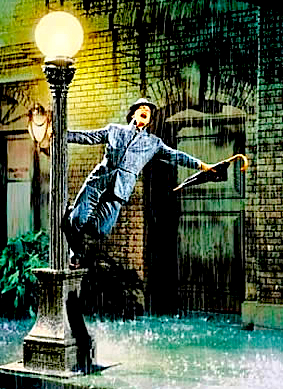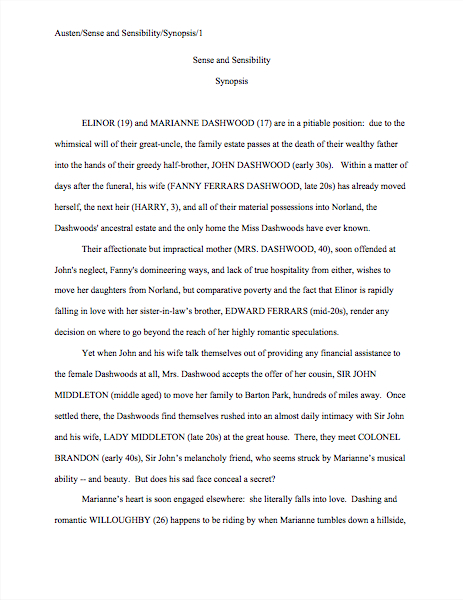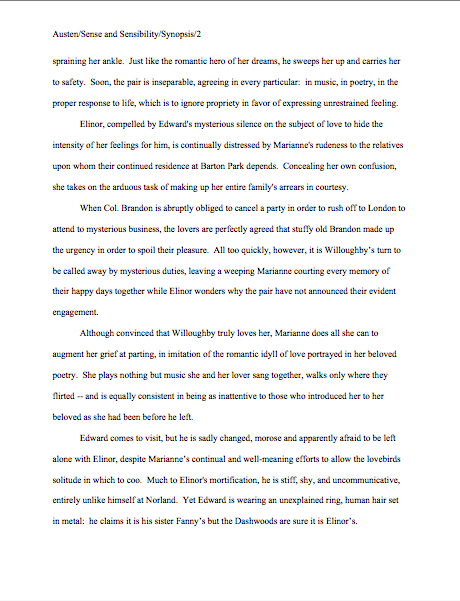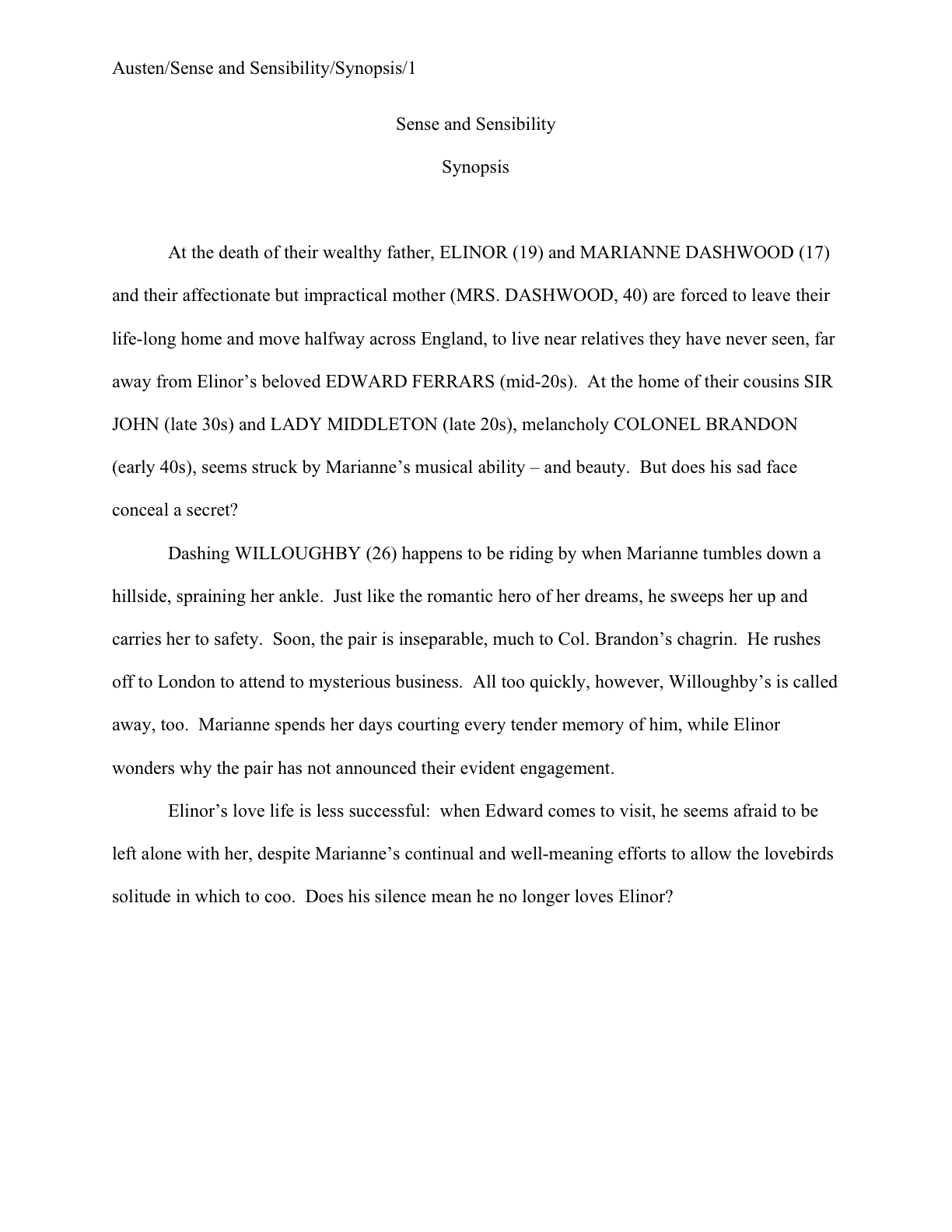
Did you enjoy your day off, everyone? I like to think of it as step one in declaring my birthday (and Truman Capote’s, and Euripedes’. as it happens) an international holiday. Rested and refreshed, let’s meander back to our ongoing list of questions designed to ferret out the most pervasive of synopsis problems. The hit parade so far:
(1) Does my synopsis present actual scenes from the book in glowing detail, or does it merely summarize the plot?
(2) If the reader had no information about my book other than the synopsis, would the story or argument make sense? Or is more specific information necessary to render the synopsis able to stand alone?
(3) Does the synopsis make the book sound compelling? Does it make me eager to read it?
(4) Does the synopsis tell the plot of the book AS a story, building suspense and then relieving it? Is it clear where the climax is and what is at stake for the protagonist? Or does it merely list all of the events in the book in the order they appear?
(5) Have I mentioned too many characters in the synopsis? Does each that I mention come across as individually memorable?
(6) In a novel synopsis, is it clear who the protagonist is?
(7) Does my protagonist/do my protagonists come across as an interesting, unusual person(s) involved in an interesting, unusual situation?
(8) In a memoir synopsis, is it clear who the protagonist is? (Other than I.) Does s/he come across as an interesting, unusual person involved in an interesting, unusual situation?
(9) In either a novel or a memoir synopsis, is it clear what the protagonist wants and what obstacles are standing in the way of her getting it? Is it apparent what is at stake for the protagonist if s/he attains this goal — and if s/he doesn’t?
(10) In a nonfiction synopsis that isn’t for a memoir, is it clear what the book is about? Does the subject matter come across as interesting, and does the synopsis convey why this topic might be important enough to the reader to make him/her long to read an entire book about it?
(11) Does my synopsis make the book sound just like other books currently on the market, or does it come across as original?
(12) If I’m marketing fiction, does my synopsis make the story I’m telling seem plausible?
(13) If my book is nonfiction, does it come across as both plausible and as though I’m a credible source?
Is everyone happy with all of those? More importantly, is everyone’s synopsis happy with all of those?
For the sake of getting on with it, I’m going to assume that the answer is a resounding, “By gum, Anne, YES!” But if you have any questions about what I’ve covered so far, please feel free to bring ‘em up in the comments. (And for those of you new to how blogs work: to leave a comment, go to the very bottom of the post, after the category listings, and click on the green word COMMENTS. That will take you to a form where you can leave, well, comments.)
Moving on — and all of these apply equally well to a synopsis intended to rest within a query packet, a submission packet, and a contest entry, by the way:
(14) Does the first couple of paragraphs of my synopsis contain an indelible image that the reader can take away?
Since part of the goal in a synopsis is to convince Millicent the agency screener that the manuscript is fresh, unique, and well-written, wowing her with the first paragraph is essential. So wiggle your way into Millicent’s moccasins and ask yourself: does the opening of the synopsis contain something both unique and memorable? A vivid sensual image, for instance? A surprising juxtaposition of words? A fresh emotional dilemma?
In short, something that she hasn’t already seen — preferably never, but at least not within the hour?
Don’t tell me, please, that there’s something terrific at the bottom of the page, or that if Millie will only have the patience to make it to the middle of page 3, she’ll be hooked. All of that may well be true, but remember, you can’t be sure that Millicent will make it to page 3, or even the bottom of the page.
Why, you exclaim in horror? Long-time readers of this blog, pull out your hymnals and sing along: screeners stop reading as soon as they’ve reached a conclusion about a submission.
Again, this isn’t a matter of laziness, meanness, or a hatred of literature — Millicent has to get through a lot of these in any given workday. So as with a contest entry, screeners tend to pass judgment upon synopses pretty fast. Also, in order to approve a query or submission for continuing on to the next step of the screening process, screeners often need to be able to describe the book in just a sentence or two. Giving Millicent (or a contest judge) a fantastic detail will make that part of her job significantly easier.
Trust me, you want to make her job easier.
Still want to believe that she’ll read on if the writing is good enough? Okay, let’s assume for a moment that she will. (Although 9 times out of 10, she won’t.) Let’s further assume that she likes what she sees when she does read on. Which would you rather be, the synopsizer whose pages prompt Millie to run into her boss’ office and cry, “Wow, I’ve just seen an image I’ve never seen before!” or the one whose synopsis requires two minutes of explanation about why it caught her interest?
Believe me, Millicent isn’t the only one who keeps glancing at her watch. Her boss’ timepiece is set even faster than hers.
What you DON’T want to do — oh, you may think you do, but it’s not in your best interest — is to make your job as a synopsizer easier by reusing text from the first chapter of the book. Especially, as synopsis-writers for contests so often do, by recycling the opening paragraph of the book.
Which leads me to…
(15) Does the opening of the synopsis read too like the opening of the book?
This may make some of you giggle — this list has been a real laugh riot, hasn’t it? — but you wouldn’t believe how often the first paragraph or two of manuscript are actually identical to the first paragraph or two of its synopsis.
Yes, even in contest entries, where the synopsis and chapter are almost always read within the same sitting. Strategically, that’s just not very bright, in a context where a writer is trying to prove within a scant allotment of pages that it’s worthwhile to read his entire book.
Millicent and her ilk tend to regard this as a symptom of authorial laziness, but I suspect that there is usually more to it than that: I think that aspiring writers, having slaved to create a memorable opening for their books, often regard those opening paragraphs as some of their best writing. If it really is so, they reason, why not feature it in a document where it’s likely to do them some good?
If you believe nothing else I tell you today, please believe this: it won’t do you any good. People in the publishing industry remember what they’ve read; make sure every sentence you submit within a packet is different.
(16) Is my synopsis in the present tense and the third person, regardless of the tense and voice of the book itself? For a memoir, is it in the first person and past tense?
This is one of those secret-handshake things that render a rookie’s submission so apparently different from an experienced writer’s, from Millicent’s perspective: a professional synopsis is ALWAYS in the present tense and third person, unless the book in question is a memoir.
Yes, even if the book being synopsized is written in the first person. Don’t bother to try to fight this one; it’s just a convention of the trade.
(17) If the synopsis is longer than one page, are its pages numbered?
Even after years of reading both synopses intended for submission and contest entries, I remain perennially shocked at how few of them identify either themselves or the author, due no doubt to a faith in the filing systems of literary agencies that borders on the childlike.
Why do I attribute this to faith? Well, like everything else in a manuscript or book proposal, the synopsis should not be bound in any way; like pretty much everything else on earth, paper responds to gravity.
Translation: things fall; pages get separated, and some luckless soul (generally, the person under Millicent the screener on the agency’s totem pole, if you can picture that) is charged with the task of reordering the tumbled pages.
Place yourself in that unhappy intern’s Doc Martens for a moment: given the choice between laboriously guessing which page follows which by perusing content, and pitching the whole thing (into what we devoutly hope is the recycling bin, but is probably merely the overloaded wastepaper basket) and moving on to the next task, which would YOU choose?
Okay, so maybe you’re ultra-virtuous. Allow me to rephrase: what if you were Millicent, had 20 other submissions to screen before lunch, and had just scalded your tender tongue on a too-hot latte?
Even if you cried, “Of course I would take the time!” in each instance, Pollyanna Karenina, don’t rely upon the kindness of strangers. Especially busy ones who have been trained to believe that unnumbered pages are unprofessional in a submission. Make it easy to put the pages back in the proper order.
(18) Does the first page of the synopsis SAY that it’s a synopsis? Does it also list the title of the book, or does it just begin abruptly? And does every page of the synopsis contain the slug line AUTHOR’S LAST NAME/TITLE/SYNOPSIS/#?
Standard format for a synopsis dictates that the title (either all in caps or bolded) is centered at the top of the first page of the synopsis, with “Synopsis” on the line below it. Then skip one double-spaced line, and begin the text of the synopsis.
Having trouble picturing that? Here’s a crib for the visually-minded:
Looking familiar, I hope? Everyone clear on why those paragraphs need to be indented?
And if it seems a bit silly to tell the nice people who asked you to send a synopsis that what they’ve got in their trembling hands is in fact a synopsis, remember that in a largish agency, the person who requests a submission is often not the person who subsequently reads it. Not the first person, anyway.
Even if it were, from the envelope-opener’s perspective, being expected to recall one request for further materials from — how long? Perhaps a month? — before is tantamount to being asked to guess how many fingers the author is holding up.
In Nebraska, when the guesser is standing in midtown Manhattan. Don’t make ‘em guess.
(19) Is the synopsis absolutely free of errors of any kind? Not just what your word processing software tells you is an error, but an actual error?
Naturally, like every other piece of paper you intend to send anywhere near an agency, you should both spell-check and read the ENTIRETY of your synopsis IN HARD COPY, ALOUD, before you send it anywhere.
Period. No excuses. I’m not listening.
Why double-up on the proofing? 95% of writers — and 99.98% of non-writers — fall into the trap of thinking that if a document passes muster with their computers’ spelling and grammar checkers, it must therefore be spelled correctly and grammatically sound. That is, alas, generally not true.
Word processing programs’ dictionaries are NOTORIOUSLY inaccurate — and often surprisingly outdated. I am fascinated by the fact that mine evidently does not contain any words that relate to the Internet or computer operations.
Don’t believe me? At this point in human history, should I really have had to introduce “blogger” into my spell-checker’s vocabulary?
And don’t even get a professional editor started on the chronic inadequacies of most word processing programs’ grammar checkers. Mine disapproves of gerunds and semicolons, apparently on general principle, strips necessary accent marks off French words, leaving them obscenely naked, and regularly advises me to use the wrong form of THERE. (If anybody working at Microsoft does not know the ABSOLUTELY IMMUTABLE rules governing when to use THERE, THEIR, AND THEY’RE, I beg you, drop me a comment, and I shall make everything clear.) Once, when I was not looking, it incorrectly changed a word in this very blog from “here” to “hear.”
Editors like to fantasize about the special circle of hell reserved for those amoral souls who teach our children that the differences between these don’t matter. I’ll spare you the details, but they include the constant din of fingernails on chalkboards, a cozy relationship with angry skunks, and the liberal application of boiling oil to tender parts.
Grammar checkers also typically butcher dialogue, especially if it contains necessary slang. Suffice it to say, most standard word processing spelling and grammar checkers would condemn the entirety of Mark Twain’s opus outright.
My point is, like a therapist who doesn’t listen well enough to give good advice, a poor grammar checker cannot be sufficiently disregarded. Even in the unlikely event that your grammar checker was put together by someone remotely familiar with the English language as she is spoke, you should NEVER rely solely upon what it tells you to do.
Read the manuscript for yourself.
And if you’re in doubt on a particular point, look it up. In a well-regarded dictionary, not on the Internet: contrary to popular opinion, most search engines will list both the proper spelling of a word and the most common misspellings. There is no gigantic cosmic English teacher monitoring proper spelling and grammar on the web.
So get up, walk across the room, and pick up a physical dictionary, for heaven’s sake. After so much time spent sitting in front of a monitor, the walk will do you good.
(20) Are all of the proper nouns spelled correctly?
This is a perennial agents’ pet peeve, and with good reason: believe it or not, misplaced cities, states, and even character names are rife in synopses.
Why? Because these are words that are generally omitted from standard spell-checkers — or are entered with a number of possible variations. So unless you have inserted all of the proper nouns in your work into your spell-checker’s memory, it will often overlook the difference between your elegant heroine, Sandy, and that trollop who wandered into your synopsis unbidden, Sandie.
Triple-check all character and place names. Seriously.
(21) Does the synopsis read as though I am genuinely excited about this book and eager to market it, or does it read as though I am deeply and justifiably angry that I had to write a synopsis at all?
Yes, I’ve talked about this one before, and recently, but this is a subtlety, a matter of tone rather than of content, so it bears repeating. It’s often not as visible to the author as it is to a third party.
So once more, with feeling: writerly resentment shows up BEAUTIFULLY against the backdrop of a synopsis, even ones that do not breathe an overt word about marketing. The VAST majority of synopses (particularly for novels) simply scream that their authors regarded the writing of them as tiresome busywork instituted by the industry to satisfy some sick, sadistic whim prevalent amongst agents, a hoop through which they enjoy seeing all of the doggies jump.
If you have even the vaguest suspicion that your synopsis — or, indeed, any of your marketing materials — may give off a even a whiff of that attitude, hand it to someone you trust for a second opinion.
Made it through all of the questions above? After you have tinkered with the synopsis until you are happy with all of your answers, set your synopsis aside. Stop fooling with it.
Seriously — there is such a thing as too much editing. Then, just before you send it out, read it again (IN HARD COPY and OUT LOUD, of course), and ask yourself a final question:
(22) Does my synopsis support the image of the book I want the requesting agent or editor to see? Would it be worth my while to modify it slightly in order to match more closely to what I told this sterling individual my book was about?
”Wait!” I hear some sharp readers out there cry. “Is Anne saying that it’s sometimes a good idea to tailor the synopsis to the particular agent or editor? Catch me — I’m about to faint with surprise!”
Well caught, oh ironic fainters. Yes, I am the queen of specialized submission packets. Down with genericism, I say!
It’s just common sense, really. If you heard an agent or editor expresses a strong personal preference for a particular theme or style in her speech at an agents’ and editors’ forum or during a pitch meeting, isn’t it just common sense to tweak your already-existing synopsis so it will appeal to those specific likes? If your dream agent let slip in your meeting that she was really intrigued by a particular aspect of your story, doesn’t it make sense to play that part up a little in the synopsis?
Doesn’t it? Huh?
A word of warning about pursuing this route: do NOT attempt it UNLESS you have already written a general synopsis with which you are pleased AND have saved it as a separate document. Save your modified synopsis as its own document, and think very carefully before you send it out to anyone BUT the agent or editor who expressed the opinions in question.
Why? Well, contrary to popular belief amongst aspiring writers and as I have been pointing out for several years now in this very forum, agents and editors are not a monolithic entity with a single collective opinion on what is good and what is bad writing. They are individuals, with individual tastes that vary wildly, sometimes even moment to moment — and certainly over the course of a career.
Think about it: was your favorite book when you were 13 also your favorite book when you were 30? Neither was any given agent’s.
And isn’t your literary opinion rather different on the day you learned that you were being promoted at work and the day that your cat died? Or even the moment after someone complimented your shirt (that color brings out your eyes, you know, and have you lost a little weight?), as opposed to the moment after you spilled half a cup of scalding coffee on it?
Again, what’s true for you is true for any given agent, editor, or screener: a LOT of factors can play into whether they like the pages sitting in front of them — or the pitch they are hearing — right now. As the old international relations truism goes, where you stand depends upon where you sit.
Bear this in mind when you are incorporating feedback into your synopsis — or, indeed, any of your work. Just because one agent (or an editor, or a contest feedback form, or every last member of your writers’ group, or the Wizard of Oz) has advised you to tweak your story this way or that, it doesn’t necessarily mean everyone in the industry will greet that tweak rapturously.
Use your judgment: it’s your book, after all. But by all means, if you can modify your synopsis for the SPECIFIC eyes of the individual who expressed the particular opinion in question, do it with my blessings.
Okay, that’s enough poking at your synopsis for now. Next time, by popular request, I am going to make a jump from a fairly high dive: I’m going to show you a 5-page, 3-page, and 1-page synopsis for the same book, to help give those of you new to the game a clearer idea of the scope of each. Yes, that’s right: I’m VOLUNTARILY sitting down and writing three separate synopses of the same story.
Never say I didn’t do anything for you, people. Keep up the good work!




















